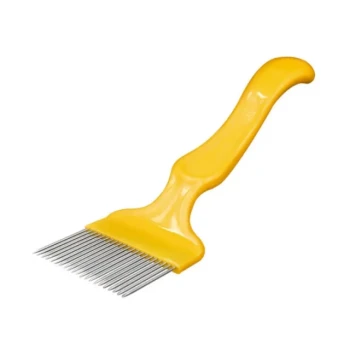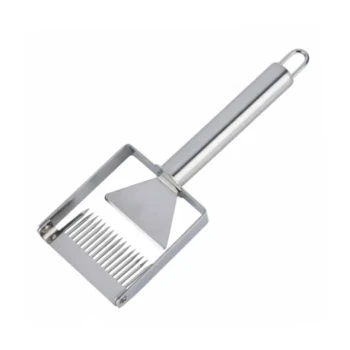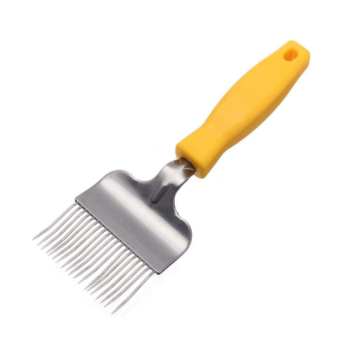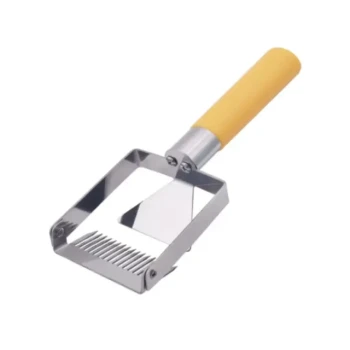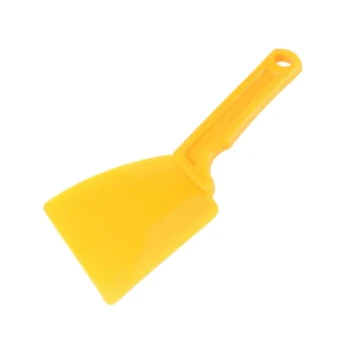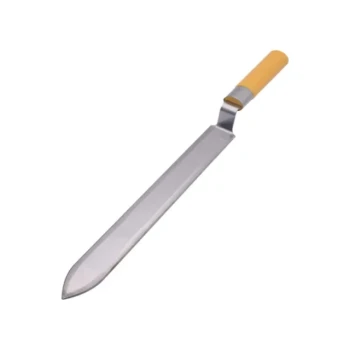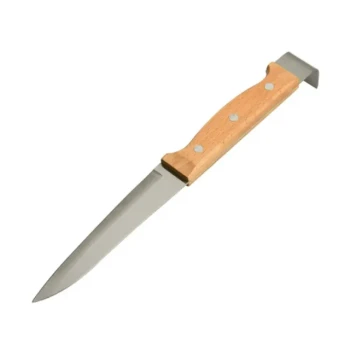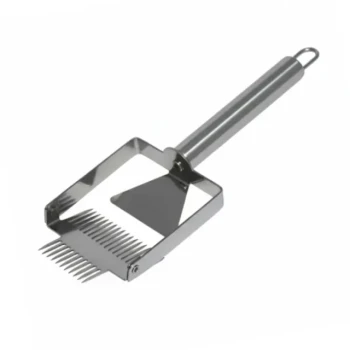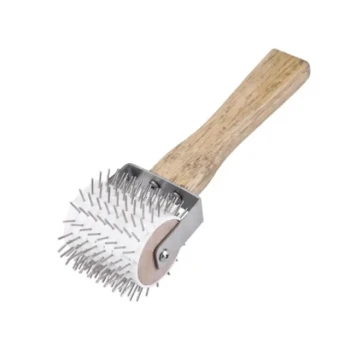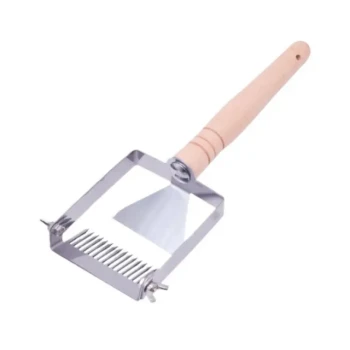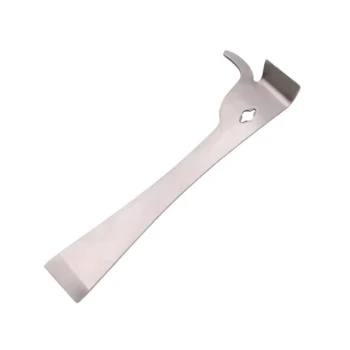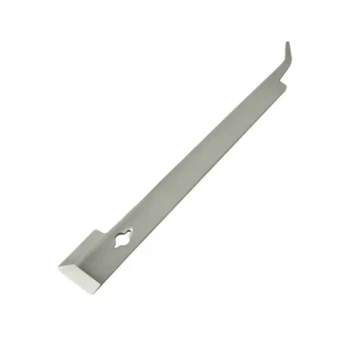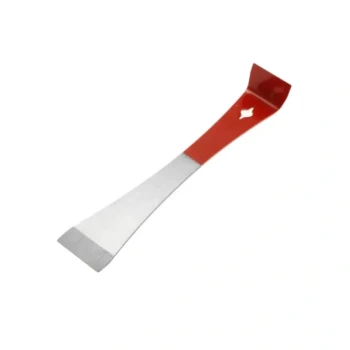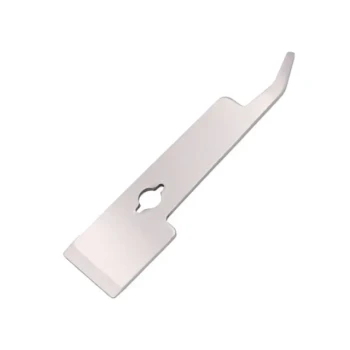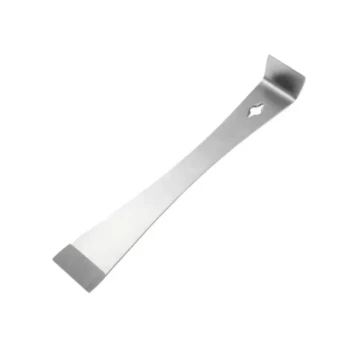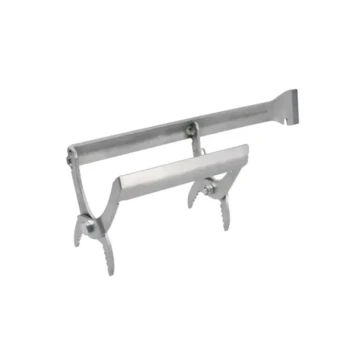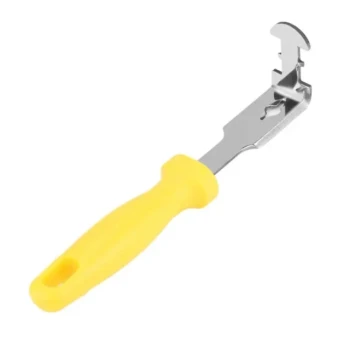To remove beeswax cappings from honey cells, beekeepers use one of three primary tools. These include a simple cappings scratcher for scraping, a manual knife heated in hot water for slicing, or a self-heating electric uncapping knife for the most efficient and clean cut.
The core decision is not about which tool is "best," but which tool is right for the scale of your operation. Your choice will balance cost, harvesting speed, and the number of hives you manage.
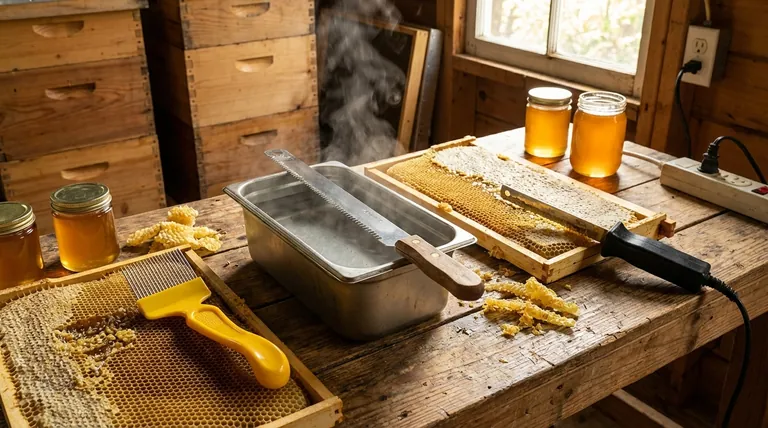
The Three Primary Uncapping Tools
Each uncapping tool serves the same fundamental purpose: to open the sealed wax cells so honey can be extracted. However, they differ significantly in their method, efficiency, and cost.
The Cappings Scratcher (Uncapping Fork)
A cappings scratcher is a simple, fork-like tool with sharp tines. The beekeeper uses it to pierce and scrape away the wax cappings, exposing the honey underneath.
This tool is ideal for beginners, beekeepers with only one or two hives, or for cleaning up small areas on a frame that a knife may have missed.
While inexpensive and easy to use, it is the slowest and messiest method. It also tends to shred the wax comb more than a knife, requiring more repair work from the bees.
The Manual Uncapping Knife
A manual uncapping knife is essentially a long, thin blade, often with a serrated edge. To use it effectively, the knife is heated in a container of very hot water.
The heated blade melts through the wax, allowing for a much cleaner slice across the frame compared to a scratcher. Beekeepers typically use two knives, keeping one in the hot water while the other is in use.
This method is a good middle-ground. It provides a cleaner cut that better preserves the comb structure but requires a heat source and is slower than an electric option.
The Electric Uncapping Knife
The electric uncapping knife is the most efficient tool for most hobbyist beekeepers. It contains an internal heating element, often thermostatically controlled, that keeps the blade at a perfect, consistent temperature.
This eliminates the need for hot water and allows you to work through frames quickly and continuously. The consistently hot blade produces a very clean, smooth cut, minimizing comb damage and speeding up the entire harvest process.
While it is the most expensive of the three options and requires a power source, the time and labor saved are substantial for anyone managing more than a few hives.
Understanding the Trade-offs
Choosing the right tool requires an honest assessment of your goals and the scale of your beekeeping.
Cost and Initial Investment
Your budget is a primary driver. A cappings scratcher is the most affordable, costing only a few dollars. A good manual knife is a modest step up. An electric knife represents the largest initial investment.
Harvesting Efficiency
Time is the most significant factor. Uncapping with a scratcher is slow and laborious. A heated manual knife is faster, but the process of swapping and reheating knives adds time. An electric knife is by far the fastest and most fluid method.
Impact on Comb Preservation
How the comb is treated matters. A clean slice from a hot knife (manual or electric) removes the cappings while leaving the underlying cell structure largely intact. This saves the bees significant energy, as they only need to rebuild the cap, not the entire cell wall. A scratcher, by its nature, does more damage to the cells.
Making the Right Choice for Your Apiary
Ultimately, the tool should match the task at hand. Your hive count is the best guide.
- If you have 1-2 hives: Start with a cappings scratcher or a simple heated knife; the low cost and simplicity are perfectly adequate for a small harvest.
- If you manage 3-10 hives: An electric uncapping knife is a worthwhile investment that will save you significant time and effort during harvest.
- If you are fixing missed spots: A cappings scratcher is the perfect tool for touch-ups, even if you primarily use an electric knife for the main job.
Selecting the right tool for the scale of your work turns a potential chore into an efficient and rewarding part of beekeeping.
Summary Table:
| Tool | Best For | Key Features |
|---|---|---|
| Cappings Scratcher | Beginners, 1-2 hives, touch-ups | Low cost, simple, but slow and messy |
| Manual Heated Knife | Moderate-scale hobbyists | Cleaner cut than a scratcher, requires external heat source |
| Electric Uncapping Knife | 3+ hives, efficiency-focused beekeepers | Fastest, cleanest cut, built-in thermostat for consistent heat |
Ready to streamline your honey harvest? The right equipment makes all the difference. At HONESTBEE, we supply commercial apiaries and distributors with high-quality, durable uncapping tools designed for efficiency and comb preservation. Contact our wholesale experts today to discuss the best tools for your operation's scale and maximize your harvest productivity.
Visual Guide
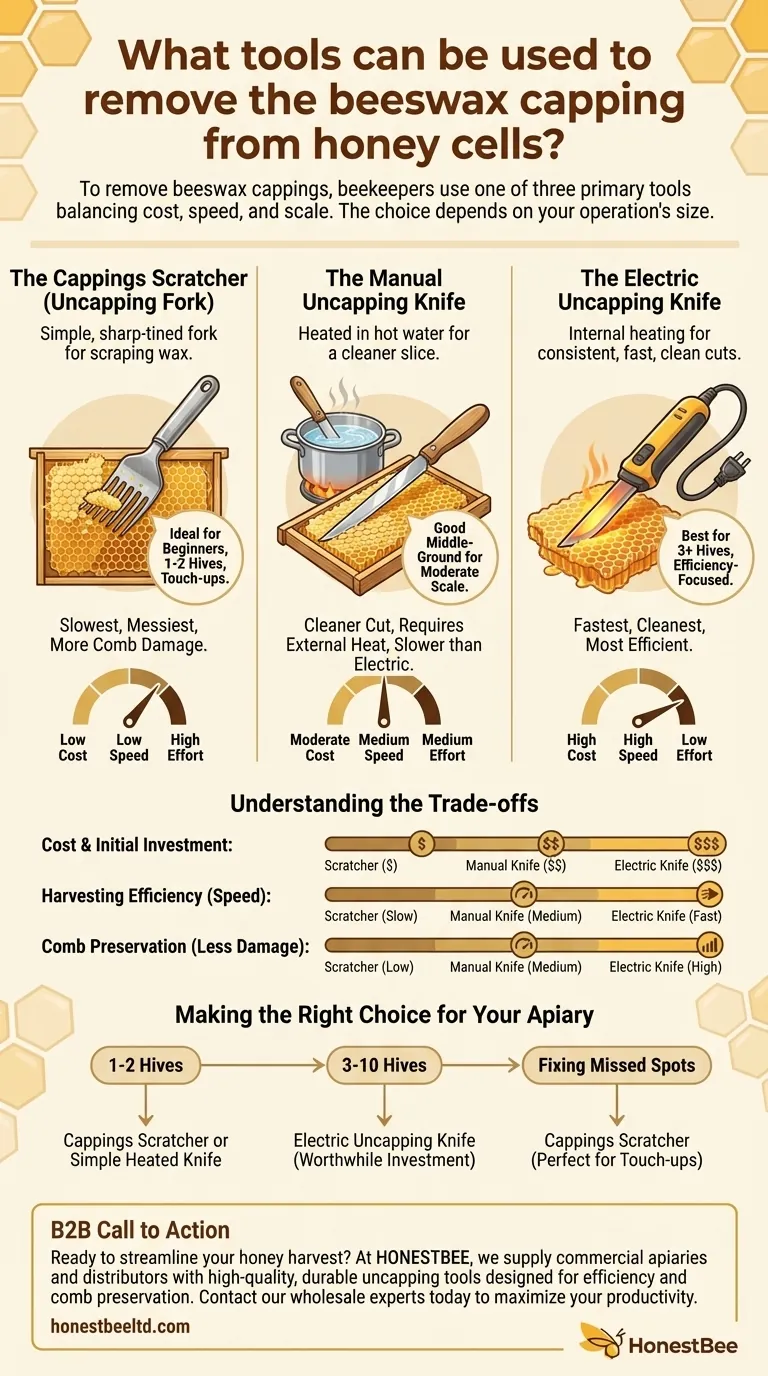
Related Products
- Professional Honey Uncapping Fork Tool with Customizable Tine Options
- All-Stainless Steel Pivoting Honey Uncapping Fork for Beekeeping
- Professional Bent Tine Honey Uncapping Fork with Ergonomic Grip
- Stainless Steel Pivoting Honey Uncapping Fork with Plastic Handle
- Stainless Steel Dual Blade Uncapping Plane
People Also Ask
- What is an uncapping fork? A Precision Tool for Efficient Honey Harvesting
- What is the use of an uncapping fork? A Precision Tool for Hive Management and Honey Harvesting
- What is the recommended practice when using plain knives for uncapping? Master the Two-Knife Method for a Perfect Harvest
- What are the common methods used by small-scale beekeepers to uncap honey frames?
- What are the advantages of an uncapping fork? Achieve Precision Honey Harvesting for Your Apiary
